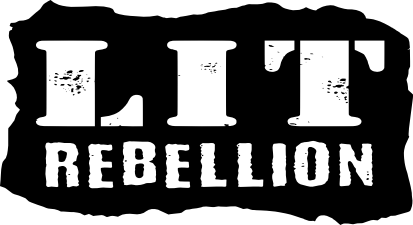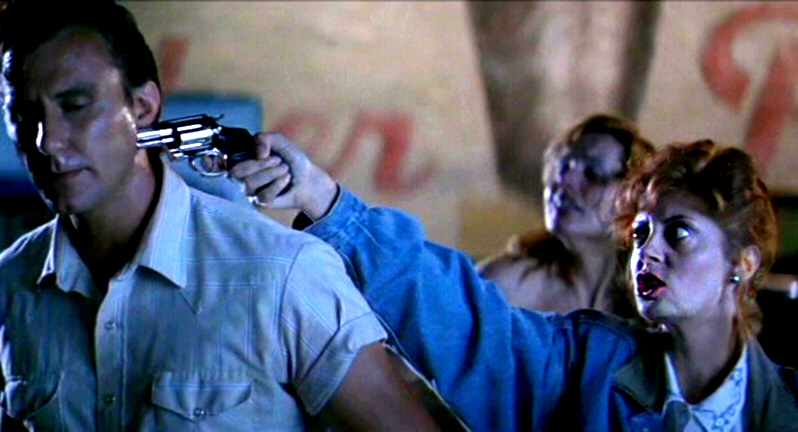The following is adapted from a chapter of Les Edgerton’s upcoming writer’s craft book, A Writers Workshop at the Bijou, which uses the iconic movie Thelma & Louise to teach storytelling essentials.
The two most important characters in a novel are the protagonist and the antagonist. I want to spend some time defining these two characters and their roles in the story as there are many misconceptions.
First, to define each term.
The Protagonist
The protagonist is simply the person through whose eyes and viewpoint we experience the bulk of the story. I feel it a mistake to assign moral qualities to either the protagonist or the antagonist. Therefore, I believe it’s misleading to use terms such as “hero” or “heroine” to describe the protagonist. Doing so assigns a moral value to him or her that is not only inaccurate, but that often leads to creating poor characters. When you think of protagonists as “good guys” and antagonist’s as “bad guys” or villains, the temptation is great to create one-dimensional, cardboard, almost “cartoonish” characters. Dudley Doright and Snidely Whiplash.
By the same token, the term “antihero” is misleading. By its very name, it also implies a moral quality assigned to the character. The protagonist is neither a hero nor an antihero. They’re simply the person through whose persona we experience the story.
Do yourself a favor. Don’t think of these two characters as “good” and/or “bad.” I think you’ll find you create far more complex and compelling characters by not doing so.
Same way with that term that’s crept into our writing lexicon in the past few years. That main character thingy, or that even more insidious appellation, that “MC” monstrosity. That says… nothing. Of course the protagonist is the “main character.” But, to refer to him or her with that term, negates somewhat the value of the protagonist. Describing the protagonist as the “main character” implies that it’s the story that’s mostly important (at the expense of character) and that’s simply not true. All stories, regardless of genre, are pretty much the same. It’s the protagonist in his/her battle in the story to resolve the story problem that’s important. Plots are limited—there are only 6-8, depending on the source. Characters—particularly protagonists—on the other hand, are limitless. The life of any story isn’t the plot. It’s how the protagonist and antagonist operate within the plot, not the clever and various ways in which the killings, bombings, kidnappings, love and/or sex scenes, naval-button contemplations or whatever are depicted. Those things are incidental to the characters and only exist to serve the characters and provide the obstacles for the struggle.
The Antagonist
Likewise, don’t think of the antagonist in terms of villains. He or she is simply the person whose goal(s) conflict with the protagonist’s goal(s). Period. Again, just as with the protagonist, no moral value is assigned, at least in relationship to the definition of their character. Not the “bad guy” or “bad gal.” If you think of antagonists as villains, you’ll end up with Snidely Whiplash-type characters. One-dimensional, cardboard, cartoonish characters.
The antagonist, just like the protagonist, can be a good guy or gal or a bad guy or gal. Doesn’t matter. Novels aren’t morality plays. As Samuel Goldwyn said to the screenwriter who sent him a script with a theme of good and bad (badly paraphrased): “Don’t send a message. Western Union sends messages and they do it well. Send me a story.”
Can there be more than one protagonist or antagonist?
Nope.
One protagonist, one antagonist per novel.
Now, that doesn’t mean they each can’t have multiple allies. They both can and most likely will.
Are there exceptions? Probably, although I can’t think of any right now. Remember that just because a novel was published doesn’t “prove” it was any good. Doesn’t mean it’s a good model to follow, necessarily. Bad novels get published just about every day. But, do yourself a favor and don’t use a bad novel for a template. I can pretty well guarantee you that there aren’t very many good novels with “co-protagonists” and “multiple antagonists.”
One of the reasons this is true is that when you begin creating more than a single protagonist and/or antagonist, the reader’s focus begins to get diffused. We can “see” an individual. Once you begin creating crowds, it becomes harder to figure out whose story it is or who we should follow.
Learning from Thelma & Louise
Let’s look at the iconic 1991 film Thelma & Louise for particularly great examples of a powerful protagonist and an even more powerful antagonist. If you haven’t seen this movie, you’ll want to give it a watch to fully understand what’s described below. The setup for the story is that Thelma, a beautiful but unassuming woman in an abusive relationship, and Louise, her more forthright and worldly friend, go on what is intended to be a weekend getaway. When the two stop at a roadhouse, a man attempts to rape Thelma, and Louise shoots the man—which is the impetus for the story’s action.
By the way, the strength of your novel depends on the strength of your antagonist, not your protagonist. Write that down. The antagonist should be at least the equal in strength of the protagonist, and preferably stronger. This includes all forms of strength, including physical, mental, emotionally, resource-wise… in every way you can dream up. If the antagonist is weaker in any way than the protagonist, then the protagonist doesn’t have to do much to prevail, does he? And, you want the protagonist’s struggle to be uphill all the way.
The protagonist in Thelma & Louise is Thelma. Period. I know the title says Thelma and Louise, but it’s Thelma’s story. Louise is along for the ride and the primary role she serves is the Mentor role. Callie Khouri, who wrote the screenplay, was well-aware of that. If they were co-protagonists, wouldn’t Khouri have given Louise’s big sex scene the same big stage as she did Thelma’s? She didn’t. It’s Thelma’s story, all the way.
Another factor that determines who the protagonist is is the character arc. You know, that old Freitag scheme that looks like a roller coaster? Only the protagonist gets that. His or her character has to undergo a significant change as a result of the struggle to achieve the story goal. Only Thelma undergoes this change in the story. Louise changes a bit, but by and large, at the end of the story, she’s pretty much the same as she was at the beginning. Thelma, on the other hand, has had a profound change from where she began. You’ll see that change as we go along here.
Antagonist, Not Villain
The antagonist in Thelma & Louise is… Hal the cop as played by Harvey Keitel. Is he a villain? Nope. Not in the least. He’s undoubtedly the single most moral character in the story. His goal is completely honorable and good… for those looking for good guys and bad guys in their fiction.
It’s just that his goal is in direct conflict with Thelma’s. His goal is to rescue Thelma and her friend, Louise. To save them first from going to jail and then, as the story evolves, to save them from being killed. Absolutely, 100 percent honorable goal. Can you see how the term “villain” doesn’t have a thing to do with Hal’s character? Do you think for a second that if Khouri thought in those terms—heroes/heroines vs villains—she could have possibly written these characters—particularly Hal? Not a chance in hell! If her knowledge of story had rested on those kinds of definitions, she would be writing direct-to-video screenplays, if even that.
Please—if you get nothing else from this article—never again think of your characters as hero/heroine and villain!
Are there characters in the story who provide obstacles for Thelma? Sure. Her husband Darryl is about as “villainy” as you could ever wish for. Just about every male character in the story provides opposition. J.D., the charming drifter played by Brad Pitt, steals their money, even though he does afford Thelma respect in their love-making. The state cop with the tailored uniform and mirrored sunglasses and male chauvinist attitude is villainy. The tanker driver with his pig-like gestures and intentions is villainy. Harlan, the would-be rapist is definitely villainy. The guys manning gas pumps when they stop, and the guys leaning up against building posts ogling them, are all minor variations of villainy.
And, guess what? Just about all of those characters fit the Snidely Whiplash mold. No antagonists in that bunch, except in a very limited, stereotypical role, basically as villainous. Louise’s boyfriend Jimmy is pretty much a good guy, but he’s definitely not an antagonist. He’s one of their few “helpers” when he comes to Louise’s aid (and, by extension, Thelma’s). No opposition to Thelma’s goal there.
The one character whose goal provides consistent and powerful opposition to Thelma’s goal is Hal. She wants to escape; his goal is to catch her.
And it’s that dynamic that makes for complex characters and complex stories. Two individuals, each with a goal at odds with the other. Both with worthy goals. No “good vs evil” going on here at all. Each the very model of a great protagonist/antagonist.
Look at Hal’s strengths. He’s a lawman with tons of experience catching criminals. He’s got all the technological advantages possible. He’s got a virtual army of people to help him find and catch them. He’s got state-of-the-art computers, communications, transportation, radar, phone tracking capability at his disposal. He’s got the state police along with the FBI at his disposal. He’s got a frickin’ helicopter! He’s got all this arrayed against a housewife and a waitress in a car and little money and their destination known. He’s extremely powerful and about as strong of an antagonist as you could ever invent. When Thelma defeats him—which she does in the final scene—it resonates with the viewer since she hasn’t beaten a weakling at all but an antagonist who was stronger in just about every single way.
Think about how this story would have been had Khouri written Hal as a nasty guy who hated women and just wanted to either kill Thelma and Louise or put them in jail.
She could have done that… if she thought in terms of “heroines” and “villains.” But she didn’t. She created a protagonist, and gave her protagonist a worthy antagonist.
Join Les’s online novel-writing class, which has led directly to over three dozen published books. A new session begins in a week. The fee for the 10-week session is $400. One can also join as an auditor for $50.00. If interested, email Les at butchedgerton[at]comcast.net.



Fascinating writing advice based on a great movie. Simple and to the point. Thank you for the article.
Thanks, Dan–I appreciate it.
Thank you for going Dov Simens on this vital element to storytelling. It really does trip up beginning writers on this point.